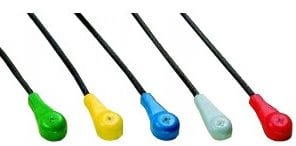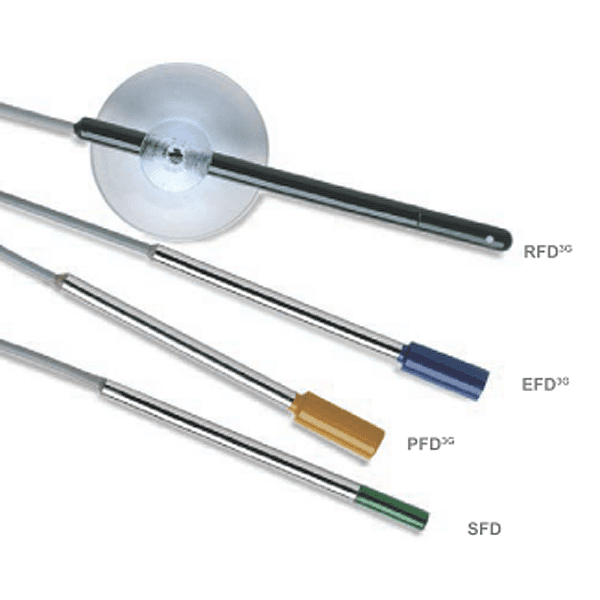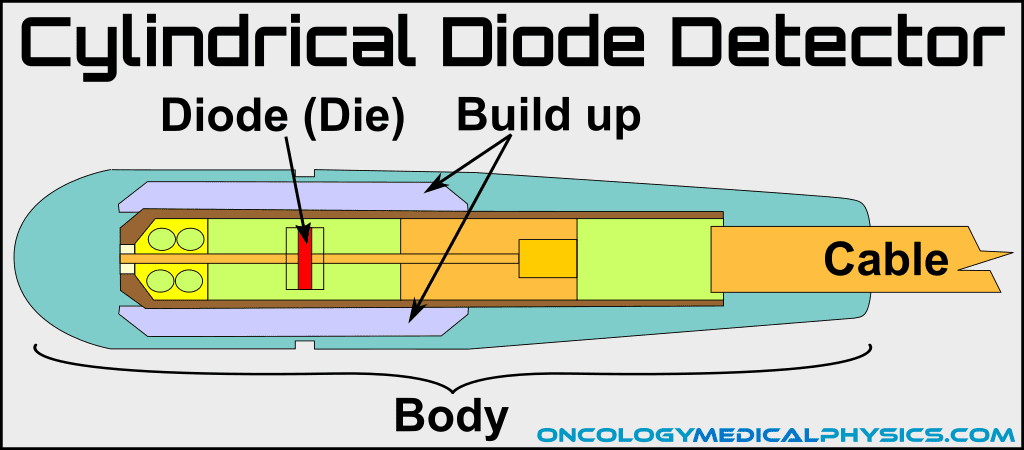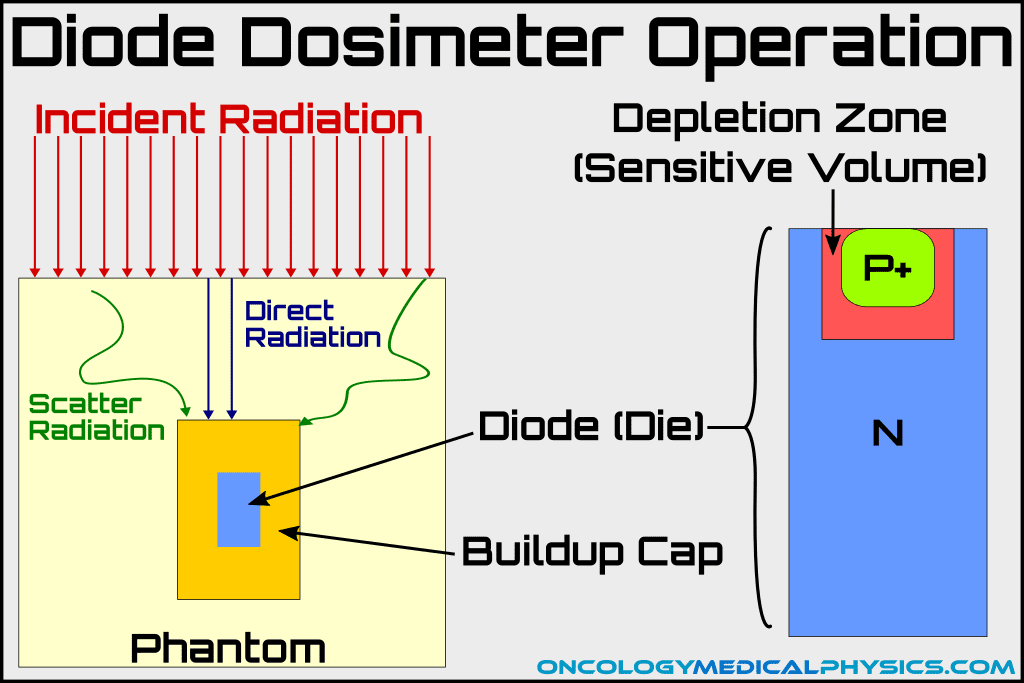Diode Detectors
Overview
Diode detectors are small volume solid state detectors used in small field dosimetry, array measurements, and in-vivo dosimetry. The small active volume of diode detectors makes them especially valuable in use cases where volume averaging may seriously obscure results (i.e. small fields, penumbra profile).
Diodes exhibit temperature, energy, dose rate, and orientation dependence.
Design
A diode detector consists of a diode (die), attached leads, a buildup cap. An electrometer is used to read out accumulated charge.
Diode (Die)
The die is the active component of the dosimeter. Diodes are comprised of a P-type or N-type semiconductor junction. The die is most often constructed of doped silicon or germanium.
Doping is the introduction of impurities to the semiconductor to produce either P-type (electron acceptor) or N-type (electron donor) semiconductors.
Buildup Cap
Surface diodes are constructed with a buildup cap surrounding the diode. This cap attenuates an incident beam allowing the device to measure surface dose.
Scanning diodes are often constructed without a buildup cap.
Leads
Metallic leads are attached to the die allowing for readout by the electrometer. Construction of these leads can add greatly to the orientation dependence of the detector.
Theory of Operation
PN Junctions and the Depletion Zone
There are two broad types of semiconductors: electron donors, referred to as N-type, and electron acceptors, referred to as P-type. When a P-type and an N-type semiconductor are placed in contact, electrons tend to flow from the N-type to the P-type semiconductor. This electron flow continues until a retarding electric field forms at the junction of the P- and N-type semiconductors, preventing further ion exchange. This region of retarding electric field is known as the depletion zone.
Key Point: The depletion zone is the active region of a diode detector. Because this region is only a small fraction of the die, volume averaging of a diode detector is very small.
Key Point: Semiconductors are materials with a small band gap that may be overcome by excited electrons. Doping materials can impact the size of the bandgap and hence the properties of the semiconductor.
Radiation Measurement
- Radiation incident upon the sensitive volume (i.e. the depletion zone) liberates ions.
- For electron measurement, the incident electrons may be directly captured.
- Ions are influenced by the strong electric field in the depletion zone. This propels the ions creating a current or accumulating a net charge.
- An electrometer is used to measure accumulated charge or induced current. This measurement is correlated with absorbed dose via a calibration constant.
Reverse Biasing
Some diode detectors may also be operated in a "reversed bias" mode in which a negative voltage is applied to the P side and a positive voltage is applied to the N side. This increases the diode's sensitivity and collection efficiency (less recombination) but increases the volume of the depletion zone (more volume averaging).
Comparison of Common Dosimeters
| Device -Accuracy | Common Uses | Advantages | Limitations |
|---|---|---|---|
| Ion Chambers ±1% | -Reference Dosimetry -Percent Depth Dose Distributions | -Best understood -Sub 1% accuracy possible -Low energy dependence | -Size limitations -ADCL calibration required |
| Diode Detectors ±2-3% | -Small field dosimetry -Array devices -Electron PDD | -Small volume -Rapid readout -No external bias | -Temperature dependence (0.5%/C) -Dose rate dependence -Energy dependence |
| Film ±2-5% | -Planar dose distributions -Electron PDD | -Best spatial resolution (μm) -Large area measurement -Persistent dose record -Tissue equivalent (radiochromic only) | -Delayed readout -Batch-to-batch variation -Chemical development (radiographic only) |
| Luminescent Dosimeters ±3% | -In Vivo Dosimetry -Personnel dosimeters -End-to-end testing (IROC) | -Small size -Low MV energy dependence | -Delayed readout -Signal loss over time -Supralinear response with accumulated dose |
| MOSFET Detectors | -In vivo dosimetry -Small Field Dosimetry -Surface dose | -Extremely small effective volume -Permanent dose record -Instant readout | -Finite life (~100Gy) -Energy Dependence -Temperature Dependence -Sensitivity changes with accumulated dose |
| Plastic Scintillators | -Small Field Dosimetry -Array Measurements -Electron measurements | -Small volume -Near water equivalent -Dose and rate independent | -Noise, especially Cherenkov Radiation -Sensitivity change with plastic yellowing -New technology, few vendors |
Navigation
Not a Member?
Sign up today to get access to hundreds of ABR style practice questions.






